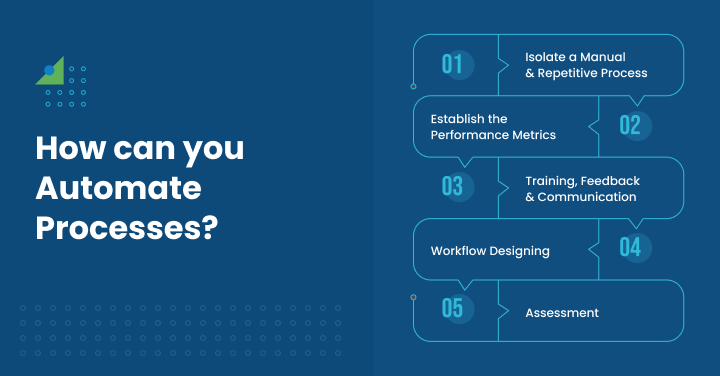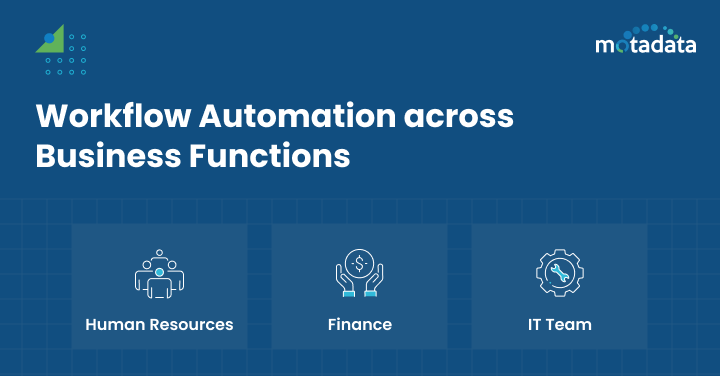Over the last few decades, some firms have worked hard to hire the right people and develop the right processes. However, those achievements have not translated into bottom-line growth. A more detailed examination of that matter shows that the issue lies somewhere in productivity. If the firm’s talent is too busy with rule-based processes and administrative work, it would be difficult for the business to generate value based on their deliverables.
Waiting around for responses, approvals, and decisions on micro-requests across the workday create an inefficient organizational system. And this is how the firm creates a platform of bottlenecks, slowing down any potential advantage developed by hiring the right people and employing the right ITSM solution. So – how do you streamline these processes? The answer lies in workflow automation.
Workflow automation through an ITSM tool can streamline all the activities, approvals, and forms that come in the way of people and processes.These activities encompass a wide range of actions like generating records, notifying users about time-sensitive approvals, automating tasks using scripts, etc. Thus, by creating all the processes through a unified ITSM platform, you can get end-to-end automation of disjointed and manual processes that are critical for everyday operations.
Codeless Workflow Automation for Seamless Productivity
Automating all the manual processes through a single ITSM platform increases efficiency and productivity that flows across the system. The ideal ITSM platform should include a library of solutions that teams can tweak and deploy. When necessary, it should help you leverage technology without the constraints of not understanding the underlying technology. This would help the process-owners who may not have a coding background, create intuitive processes by using flow components that are easy to understand and use.
They should be able to extend the workflows and make new ones with OOTB reusable components. If you have to call the vendor, hire a tech support team, or find developer for startup to device automated workflows – the system has defeated the purpose. You should be able to automate approvals, tasks, notifications, and record changes through the ITSM tool even if you do not have a programming background.
Some key features of an ideal ITSM system that supports codeless workflow automation would be:
- Fluid UI: Since the system is meant to induce productivity, its UI must be fluid and very easy to use. With no-code solutions that work with drag-&-drop designs, you can set up processes intuitively. If you’re building a brand-focused interface, finding and using the best AI logo generator can help you create a professional look quickly.
- Customization: Just because the system is simple does not mean it should not be customizable. Your operations have idiosyncratic problems that might get solved by off-the-shelf solutions. Hence, you should ensure that your ITSM tool is automating workflow while giving you the freedom to visualize and tap into features like conditional steps and multiple branches.
- Rules-Based: Many businesses operate on processes that can be easily navigated using some fundamental rules. Once you get these rules in a workflow, you can schedule a job for processing data using triggers without having to write even one line of code.
- Visibility: With an ITSM system, you can easily merge configurations and runtime into one environment for the process owners to have visibility into all developments and to be able to troubleshoot problems using just one interface.
- Natural Language Support: When the system supports natural language descriptions of the flow logic, even the non-technical teams can benefit. Through the interface, they will be able to get inputs for configuring triggers, actions, inputs, and outputs for each process.
How can you Automate Processes?
You can automate a business process using a simple 5-step approach that starts with defining an objective and ends with a rigorous evaluation of the process.
1. Isolate a Manual and Repetitive Process
The ideal candidates for automation are usually low-level, manual, and repetitive tasks that produce little value but consume a lot of time. Generally, businesses view processes that have been running for a while as matured and can automate them since they execute based on certain rules.
2. Establish the Performance Metrics
Any form of automation will yield at least some positive results. What you really want to assess is the degree of success the automation can achieve in the context of the business. This should not be done in retrospect. Hence, make sure that you have defined the target ROI, time-to-market speed, and incremental productivity. When you launch the project, every stakeholder should understand the expected results.
3. Training, Feedback, and Communication
The training might not just focus on using the automated workflow; it can also adopt a behavioral approach to gather feedback from the stakeholders. For this approach to succeed, the process owners must ensure that they align the interests of the stakeholders for the project’s success.
4. Workflow Designing
In this step, the team will design the workflows using the ITSM tool. You can now begin creating the form, defining the steps in the workflow, and allocating authorization and guidelines for each step and each stakeholder.
5. Assessment
Once the workflow integrates into the system, you should begin measuring its impact by using analytics and intelligence reports that demonstrate relative performance compared to legacy systems and performance against the target KPI levels.
Benefits of Applying Workflow Automation
Automation brings a high degree of benefits which are visible and measurable across the business:
1. IT Efficiencies
ITSM teams get two-way benefits by deploying automated processes – they become more productive, and they start using fewer resources. It is easy to see how process automation can result in higher productivity. ITSM teams can now eliminate human errors in the system, reduce turnaround times with rule-based resolutions, and have space to respond to unplanned issue requests quickly. The team also uses fewer resources because most team members do not get bombarded with routine requests across the system.
2. Optimal End-User Experience
End-users reap a range of benefits with automated processes. 24 x 7 availability of operations, faster turnarounds, and simplified authorization processes make the end-user experience seamless.
3. Delivered Service Excellence
Business process owners will clearly see the benefits of having a more accurate, faster, and widely available set of services. This excellence will also rub onto their internal process, resulting in a domino effect of increased productivity.
4. Less Downtime, More Revenue
Critical business systems are always running – whether it is in conjunction with the IT team’s availability on-premise or without that, teams can easily access their systems and run through hurdles quicker than ever before. Plus, the ‘no downtime’ goal ensures that teams are free to work on more complex activities, without having to worry about the menial tasks.
Workflow Automation across Business Functions
We’ve realized that using an ITSM solution that supports workflow automation induces productivity and profitability across the board. Now we see how different business functions implement workflow automation processes to reap the above-mentioned benefits:
Human Resources
Instead of spending time on manual data entries whenever you bring on a new employee, you can use one of the best HR software to automates HR workflows for you.
It frees up time from your schedule and makes the onboarding process more efficient. There are more such use-cases for the HR Team:
- You can bring down the use of paperwork across the business processes.
- Automated Approvals make it easy to source and verify individuals, giving you an edge in the talent market.
- You can easily ensure compliance across the firm.
- Optimize the onboarding and off-boarding process using recruitment CRM system to make it frictionless.
Finance
You can streamline budget approvals, reimbursements, and documentation with forms, custom workflows, and process tracking.
Here are some more features you can take advantage of:
- The end-to-end document management system gets organized, efficient, and simplified.
- Approval process turnaround times are reduced.
- Auto-Payments for recurring and value-adding services can be integrated into the workflow to save time.
- A smart payroll management software can ensure timely reimbursements and payments to the entire staff– permanent, temporary, consultants, and contractors.
IT
The IT Team will witness an exponential increase in productivity with features likes:
- Efficient ticket assignment and escalation as per resource availability.
- Filtering duplicate support requests become easy.
- Updates for all the stakeholders can be scheduled and confirmed to avoid compliance or downtime issues.
- Assets can be tracked, and the usage trends can be used to optimize the network.
In Conclusion
Without an organized system, people and processes are often getting in the way of each other. Even the people who understand the due process must navigate hierarchical structures and legacy methods to resolve operational issues. These issues scale across the enterprise and create systemic inefficiencies leading to dramatically lower productivity and eventual fatigue.
An ITSM solution that supports workflow automation can solve all these problems by allowing teams to automate routine processes, enabling them to focus on more value-creating activities. When scaled, incremental individual productivity results in better competitive positioning for the firm. To know more about an ITSM solution that offers codeless and customizable workflow automation, check the Motadata ServiceOps ITSM platform which has a lucid drag and drop interface, and can project the flow of activities to comprehend process workflows easily.
FAQs:
Codeless workflow automation allows users to create and manage automated workflows without needing to write code, using intuitive visual interfaces and drag-and-drop features.
Benefits include increased efficiency, reduced operational costs, faster deployment of processes, and empowering non-technical users to automate tasks.
Traditional automation often requires programming knowledge, while codeless automation uses user-friendly interfaces, making it accessible to all team members.
Codeless workflow automation can benefit various industries, including IT, finance, marketing, healthcare, and human resources, by streamlining processes and improving efficiency.





